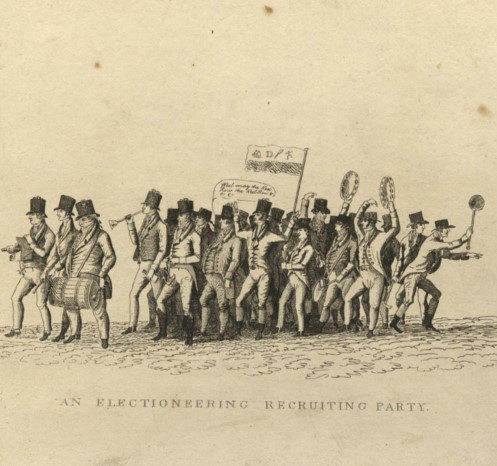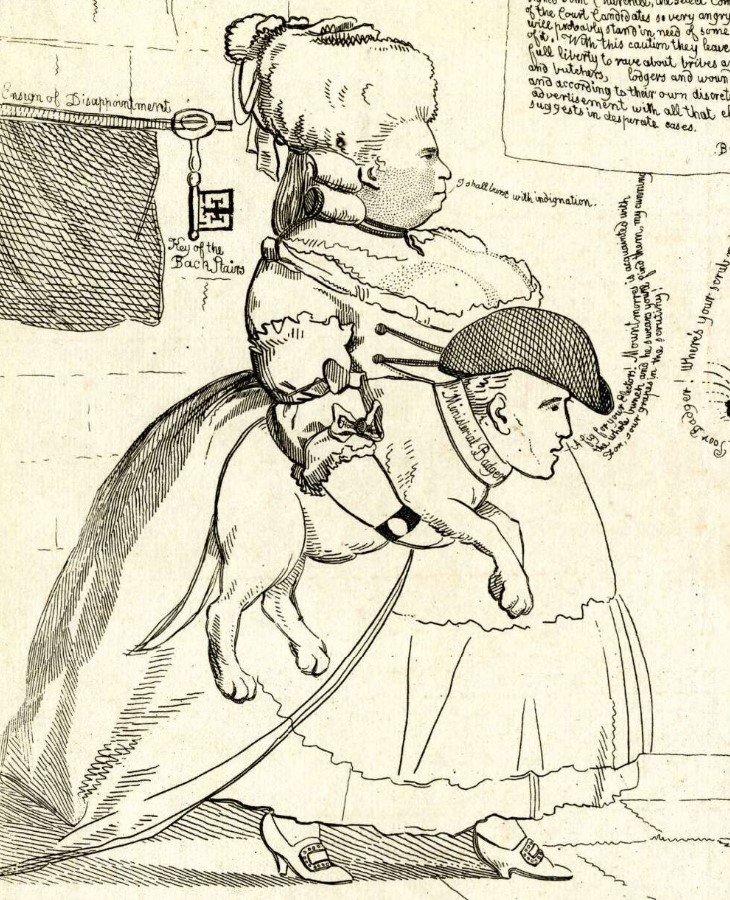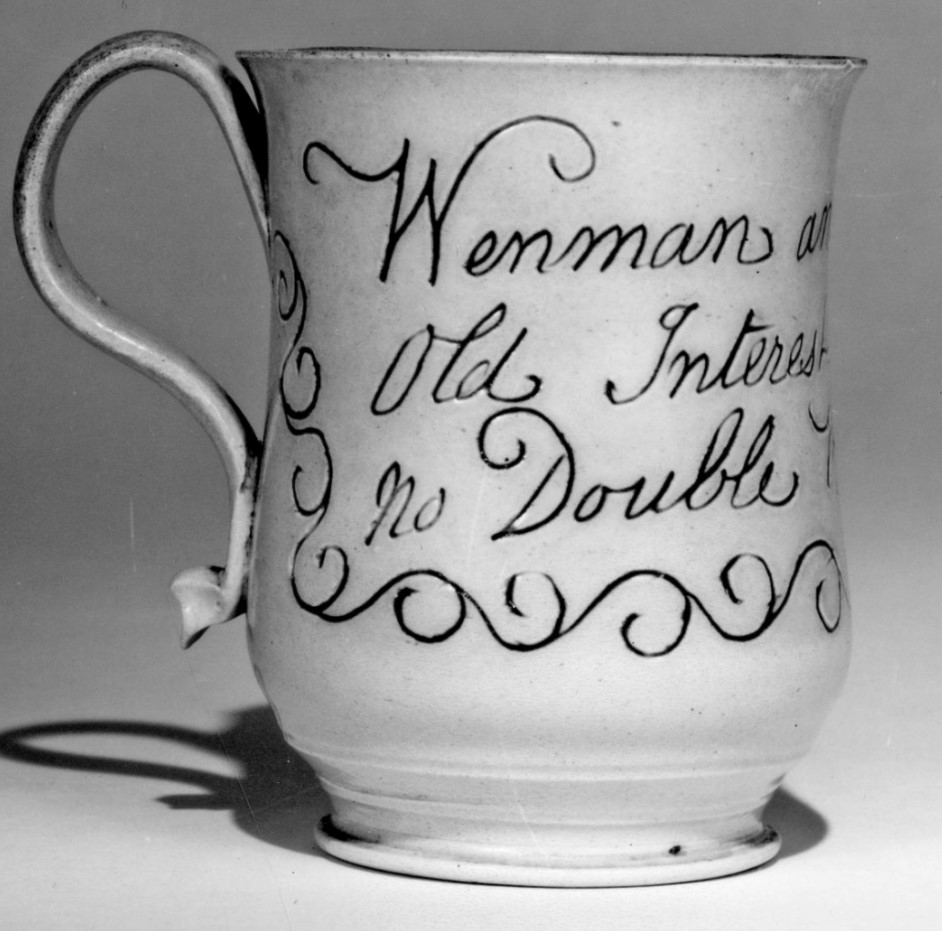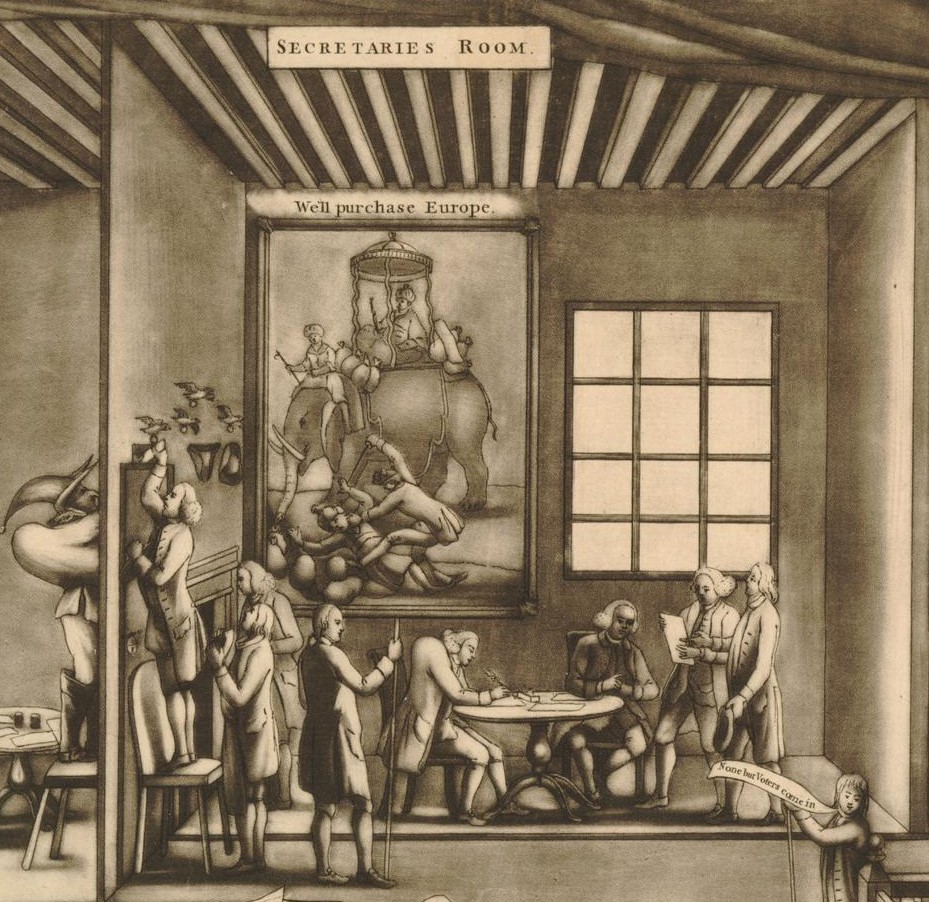The canvass aimed to get the vote out, but also linked candidates to communities [25-minute read] Canvassing was, according to David Eastwood, ‘the critical electoral institution of later-Hanoverian England’, or, as Frank O’Gorman has argued, the ‘critical point of contact’ between the electoral system and the voters prior to Reform.[1] Canvasses were organized by local […]
Canvassing






